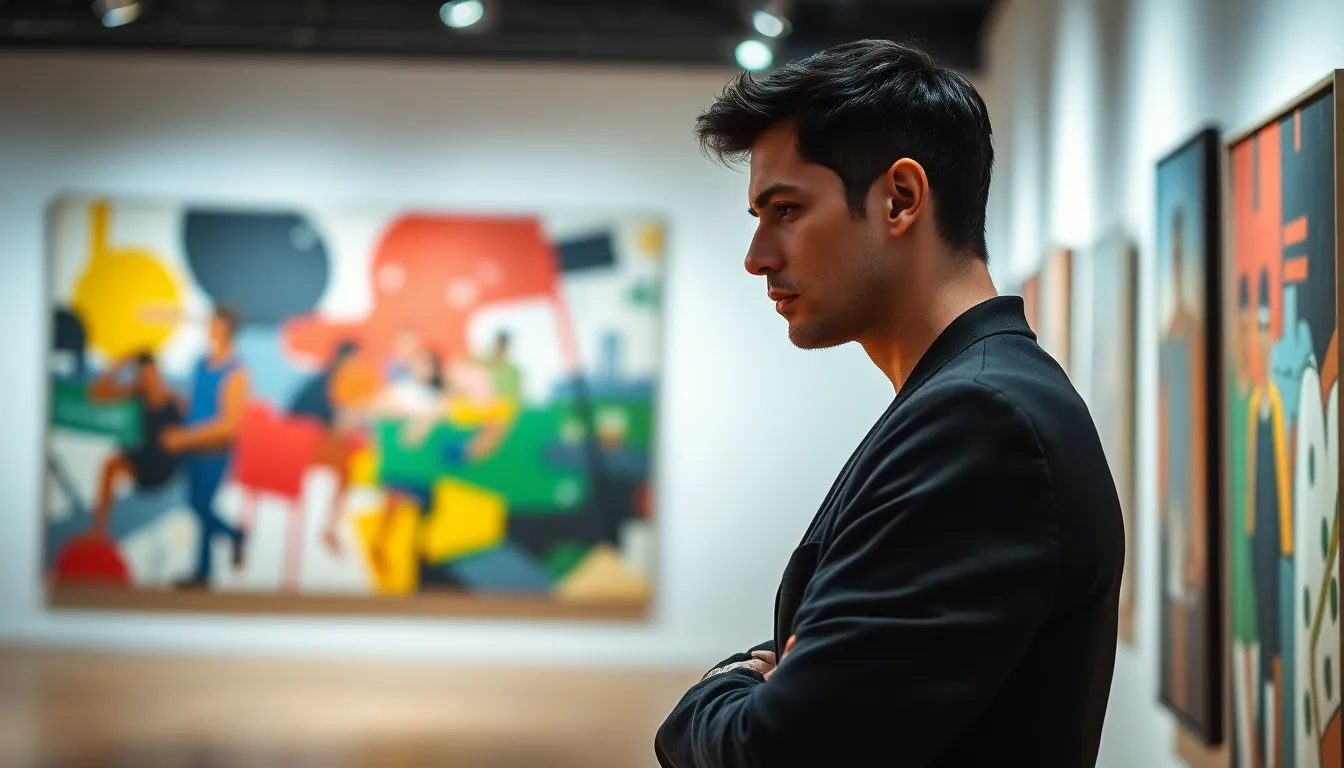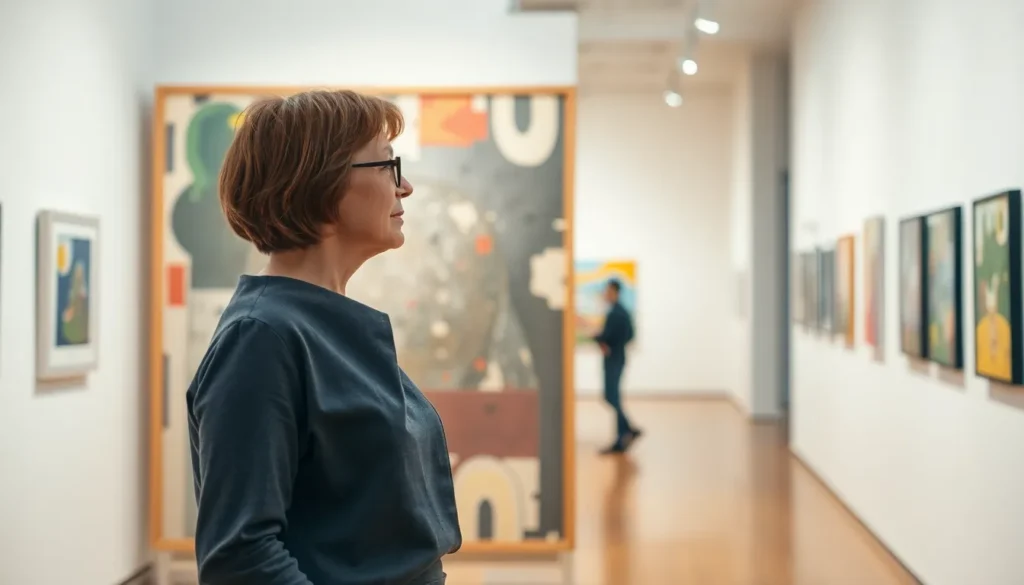Table of Contents
ToggleArt isn’t just about pretty pictures hanging on walls; it’s a wild world of emotions, stories, and sometimes, a splash of confusion. Whether it’s a masterpiece that leaves you breathless or a piece that makes you question your life choices, art analysis and criticism dive deep into the colorful chaos. It’s like having a backstage pass to the artist’s mind, revealing the secrets behind every brushstroke and color choice.
Understanding Art Analysis and Criticism
Art analysis and criticism offer essential perspectives on artworks. They help viewers grasp the intentions and deeper meanings established by artists.
Definition of Art Analysis
Art analysis involves examining artworks to understand their components and relationships. This process includes evaluating elements like composition, color, line, and texture. Viewers focus on how these elements work together, conveying emotions or themes. Context plays a vital role; examining historical, cultural, and personal influences enriches appreciation. Recognizing techniques and processes provides insight into the artist’s choices. Art analysis encourages a deeper connection, transforming passive viewing into active engagement.
Definition of Art Criticism
Art criticism evaluates artworks within broader contexts. Critics assess artworks based on criteria such as technical skill, originality, and emotional impact. They aim to provide educated opinions, balancing subjective impressions with objective observations. A critic’s analysis can guide viewers, offering valuable insights into style, movement, or significance. This critical discourse invites conversations about aesthetics and societal relevance. Through public forums, critics foster dialogue, allowing a diverse range of interpretations and responses.
Importance of Art Analysis and Criticism

Art analysis and criticism play critical roles in understanding and appreciating the intricacies of artworks. These practices deepen engagement and foster a greater connection with various art forms.
Enhancing Appreciation of Art
Art analysis elevates an observer’s experience by revealing the subtleties within the work. Observers uncover layered meanings through careful examination of elements like color, composition, and texture. Engaging with these components transforms passive viewing into active exploration. Experiencing art through analysis enriches not just comprehension but also emotional resonance. As a result, individuals develop a more profound appreciation for artists’ intentions and the overall impact of their work.
Providing Context and Interpretation
Context enriches an artwork’s significance, allowing observers to grasp its cultural, historical, and personal dimensions. Understanding the background surrounding a piece reveals the influences that shaped its creation. Analysis fosters interpretations that connect the viewer with broader societal themes and issues. Critics often highlight these connections, providing insights that prompt exploration beyond surface-level observations. Diverse perspectives emerge, contributing to a richer dialogue about art’s role in society.
Methods of Art Analysis
Art analysis employs various methods to uncover deeper meanings within artworks. Each method offers unique insights, enriching the viewer’s understanding.
Formal Analysis
Formal analysis focuses on the visual elements of a work, including composition, color, line, shape, and texture. It examines how these components interact and contribute to the overall effect. Critics assess balance, emphasis, and unity to appreciate the artist’s technical skill. This method relies on the physical aspects of the artwork, aiming to establish a foundation for further interpretation. Observers can detect patterns and contrasts that reveal the artist’s intent and emotional tone.
Contextual Analysis
Contextual analysis situates an artwork within its historical, cultural, and social framework. This approach considers the artist’s background, the time of creation, and the audience’s perceptions. By exploring these factors, critics discern how context influences meaning. Analyzing external circumstances, such as political events or societal trends, provides a richer understanding of the artwork. This method encourages discussions about relevance and significance, enhancing the viewer’s engagement with the piece.
Psychoanalytic Criticism
Psychoanalytic criticism delves into the psychological dimensions of an artwork, examining the subconscious motivations of the artist and characters within the piece. This method draws on theories from figures like Freud and Jung, exploring themes of desire, repression, and identity. Critics analyze symbols and imagery to unveil underlying emotions or conflicts. By interpreting these psychological elements, the viewer gains insights into the artist’s mental landscape and how personal experiences shape creative expression.
Approaches to Art Criticism
Art criticism encompasses various methodologies that enhance understanding and appreciation of artworks.
Influential Art Theorists
Key figures in art theory shape contemporary perspectives. John Dewey emphasized the experiential aspect of art, advocating for the interaction between the observer and the artwork. Clement Greenberg focused on formalist criticism, asserting that the medium’s properties dictate value. Michelle Foucault introduced the concept of discourse, urging critics to consider cultural contexts influencing interpretation. Their ideas foster an environment where art analysis evolves, encouraging deeper exploration of meaning and intention.
Different Critical Perspectives
Multiple critical perspectives provide diverse lenses for evaluation. Formalism prioritizes visual elements, examining composition and color relationships. Contextualism situates artworks within historical and cultural frameworks, allowing for richer interpretations based on external influences. Feminist criticism challenges traditional narratives by addressing gender representation. Other approaches include Marxist criticism, which critiques class relations, and psychoanalytic criticism, delving into unconscious motivations. Each perspective contributes unique insights, inviting broader conversations about art’s role in society and enhancing overall discourse.
Art analysis and criticism serve as essential tools for unlocking the rich layers of meaning embedded in artworks. By engaging with various methods and perspectives, individuals can deepen their understanding and appreciation of artistic expression. This exploration not only enhances personal experiences but also fosters broader conversations about the significance of art in society. As observers delve into the complexities of each piece, they contribute to an ongoing dialogue that celebrates creativity and its impact on culture. Embracing these analytical approaches ultimately enriches the relationship between art and its audience, inviting a more profound connection to the creative world.



